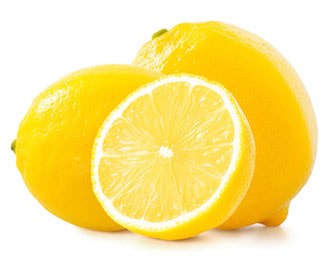Click and expand the tabs below to get started. What you'll need
experimental procedure
What's Happening
Scientists sometimes dissect, or cut apart, an organism in order to see how it is put together and how it works. When we cut apart a lemon, we can see that it has many different parts, and that all of those parts work together to keep the lemon healthy and living. The exocarp protects and heals the lemon, the pedicel connects the lemon to the branch of the tree, and the vesicles contain the fluid of the lemon. Can you think of any ways in which these parts of a lemon are similar to parts of your body? variations and related activities
Of course, now that you have a cut lemon right there in front of you, there are several things that you can do with it. You could make yourself a nice, tall glass of homemade lemonade - no powder needed! Just squeeze all the lemon juice into the glass, add water and as much sugar as you need, and drink up! But, there are also other things to do! You can use the juice of a lemon to make your own invisible ink for secret messages. Just squeeze some lemon juice into a little cup (you can also use bottled lemon juice), then use a Q-tip swab or small paint brush to write a message with this juice on a piece of plain paper. Let it dry completely and you shouldn't be able to read the message- it's invisible. To reveal the message you must know the secret: heat. With the help of a grownup carefully hold a warm iron above the paper for a few seconds until the message magically appears. You can also carefully hold the paper above a toaster (don't burn your fingers!), or sometimes a hair dryer will also work. What's happening is that the acid juice of the lemon soaks into the paper and damages the fibers a bit. When you heat the paper carbon atoms from the sugars in the juice that was absorbed begin to react with oxygen from the air and actually cause it to burn a little bit or oxidize, turning it brown. The reference links below explain this experiment in more detail if you want to give it a try. You can make a mini flame thrower out of a lemon peel and a candle! If you want to try this make sure that you have adult supervision to help you light a candle and set it on a table or something to hold it steady. Now cut off a piece of the peel (just the exocarp and some of the albedo, not the fruit inside), then hold it between your thumb and index finger with the exocarp facing away from you. Move it near the candle but not too close, then give it a little squeeze. You should see the flame explode a little (watch the video link below). The peel of citrus fruits, including your lemon, contains an oil called limonene which is the main chemical that gives citrus fruits their citrus-y smell. It's what you've probably squirted in you eye before, and it stings. It is also flammable, and that mist of oil instantly ignites as it hits the candle's flame. You can also use the lemon’s limonene oil to burst a balloon! Just squirt some of the lemon oil from the exocarp, just as described for the mini flame thrower above, onto an inflated balloon and POP! This happens because the limonene oil in the peel can dissolve the latex rubber in the balloon. This makes the balloon weaker, so it pops! If you try this we should warn you that some balloons may be much more difficult or even impossible to pop this way. That's because they have a different type of rubber or have been processed a little differently that makes them stronger. The video reference link below explains this very nicely. We have found that the cheap little balloons made for filling with water (sometimes called water bombs) work really well for this experiment, and if you do it outside with a water balloon it's even more fun when it pops! Will other citrus fruits (grapefruit, orange, clementine) work? Experiment and find out! Another interesting experiment is a variation on the classic Cartesian Diver Bottle. This fun little project is usually made with a ketchup packet, a plastic pipette or pen casing, a bit of a straw or even a small balloon (we'll have our own version as a new activity page soon, but for now check out the reference links below). You can also make a diver using a piece of a lemon peel. Just cut a little sliver of the peel (just the exocarp and a little of the albedo) and drop it into an empty plastic soda or water bottle. Fill the bottle completely to the top with water (make sure there is no air left in the bottle) then screw on the lid tightly. The lemon peel should float to the top of the bottle, but when you squeeze the bottle (you might need to squeeze really hard) the peel will sink. If you stop squeezing it will float to the top again. If you're lucky you may be able to repeat this for a few minutes until the peel eventually sinks to the bottom and stays there. You may need to experiment a bit to get just the right size and thickness piece, and you might need to try a fresher or different lemon- it can be finicky. What's happening is that the little pores on the outside of the exocarp trap some air, and this makes the peel less dense than the water and it floats. When you squeeze the bottle, however, the water inside pushes into these little pores making the peel more dense so it sinks. Eventually the air in the pores will escape as tiny bubbles (look closely and you may see them) and the peel can't float any more. references and links to more information
Some helpful diagrams and labels of parts: Another way to make a mini flamethrower: Popping a balloon with an orange peel :
Make invisible ink with your lemon juice:
Some other Cartesian Diver Bottle variations:
Make lemon curd and eat it on your toast:
Return to Main Menu
0 Comments
|







